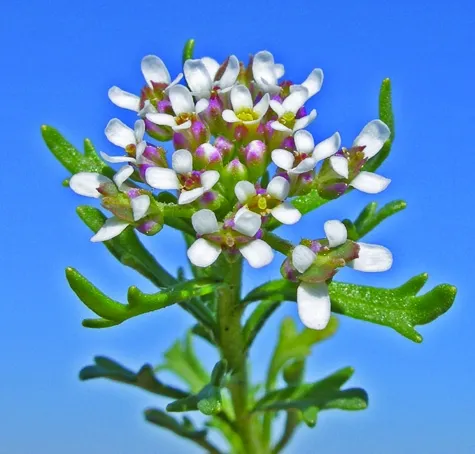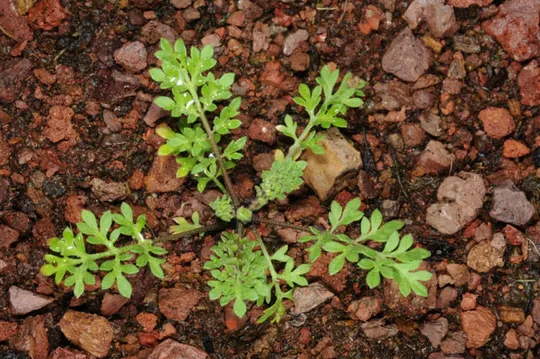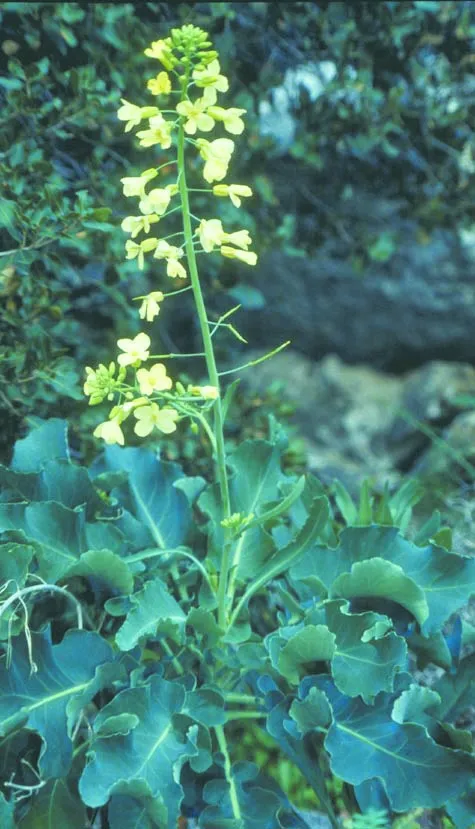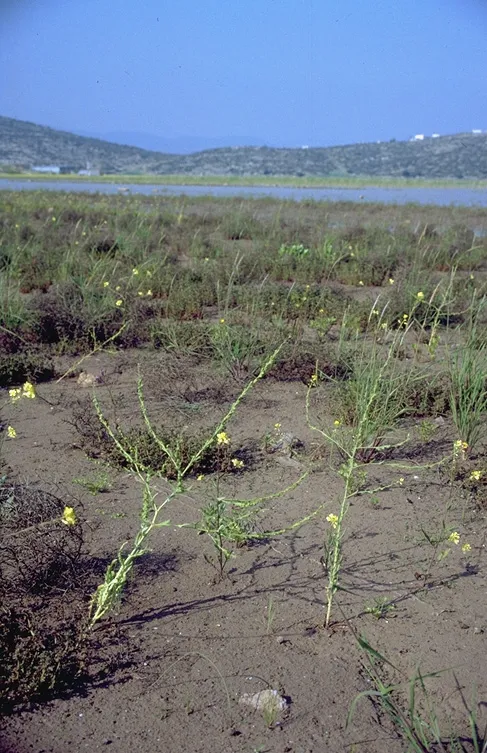Flesh-coloured Stone-cress
Aethionema carneum
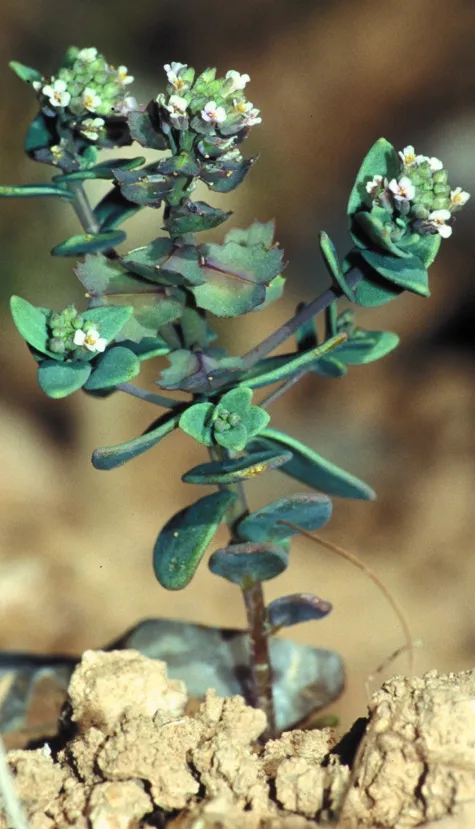
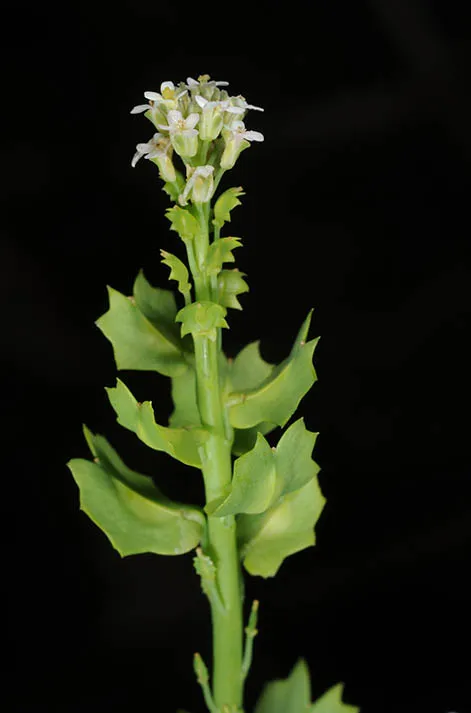
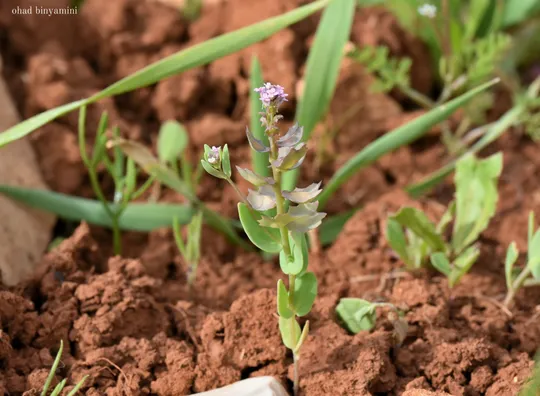
Aethionema carneum is very rare in Israel, currently growing in only two regions:
the Samarian transition zone and the Judean desert
transition zone. In the Samarian transition zone it was found in 1979 in Wadi Malih by Uri Eli'av and in 2006 it was also
found near Kokhav HaShahar. In the Judean Desert,
it was found once, in 1987, at the
Tkoa Junction at an altitude of 760 meters. It was not found on the Ma'on Ridge. A. carneum was collected
twice in Jerusalem in the 20th century (1928, 1941) and since then it is extinct. It was collected a single time in 1929 at Hartuv in the Judean Plain and there is also an observation from
Solomon’s Pools from 1986.
According to Flora Palaestina (2004) it grew in nine regions, of which there are herbarium sheets from eight and only data from the
literature for the ninth.
Grows in patches in southern Jordan, in the A-Shara
Mountains at altitudes above 1,300 meters.
Scrubland and fields in the Judean and
Samarian transition zones.
The genus Aethionema includes 70 annual and perennial herbaceous species, found mainly in the Mediterranean and Irano-Turanian regions.
The annual species grow in arid transition zones and the perennial species grow on high
mountains and in northern Europe (9 species). A number of species have been cultured for gardening. Most species have two different types of fruit (hence the Hebrew genus name) – some spherical that do not open and
contain one seed, and some concave, that open and
have many seeds. The concave fruit decompose and fall near the parent plant while the spherical
fruit disperses over long distances.
A. heterocarpum, a common species in Israel, is a vicarious
species of A. carneum, and replaces it in the Mediterranean region. It can be distinguished from A. carneum
by the entire fruit margin and the style, which
is as long as the sinus.
·
Aethionema carneum currently grows at only two
sites, and has become extinct from at least three other sites, in
which it was once found. All the sites are located in the Judea and Samaria transition
zones.
·
Not a single large population (over
50 individuals) has been reported in Israel, and all populations that were found apparently consisted only
of several plants.
·
A.
carneum grows in the Wadi Yitav and Kokhav HaShahar
reserves
·
The
site at the Tkoa Junction is threatened
by the transition from traditional to intensive agriculture, which is
accompanied by deep plowing and the application of pesticides.
Aethionema carneum is a very rare species, not easily seen. A
survey of the high transition zone should be conducted to attempt to locate
additional sites, particularly
in the vicinity of the Alon Road, the
Herodium-Bani
Na’im road and the Ma'on Ridge. One population should be monitored and its seed bank examined.
Aethionema carneum
grows mainly in the Middle East: Turkey, Syria, Lebanon, Israel, and Jordan, southern Sinai, northern Iraq and all of Iran. Its range continues eastwards to Pakistan, Afghanistan (Tian Shan), India and Central Asia as well as in the Caucasus.
Aethionema carneum
is a small, glabrous annual species with an Irano-Turanian
distribution, which is very rare in Israel. It is a peripheral species and Israel is its western
distribution limit. It is unclear whether its
extinction from
three sites is the result of its random appearance in time and space or a result of anthropogenic
activity.
Current Occupancy Map
| 1000 squre meter pixel | 5000 squre meter pixel | 10000 squre meter pixel | |
|---|---|---|---|
| number of observations | 0 | 0 | 0 |
| in total pixels | 0 | 0 | 0 |
| Family | Brassicaceae |
| Classification | On the endangered species list |
| Ecosystem | High Semi-Steppe |
| Chorotype | Western Irano -Turanian |
| Conservation Site | Tkoa Juction: junction of highway 356 with 3157 |
| Rarity |
1
5
6
|
|---|---|
| Vulnerability |
0
2
4
|
| Attractiveness |
0
0
4
|
| Endemism |
0
0
4
|
| Red number |
1
4.2
10
|
| Peripherality | E |
| IUCN category | DD EW EX LC CR EN VU NT |
| Threat Definition according to the red book | Endangered |
 Based on:
Based on:
